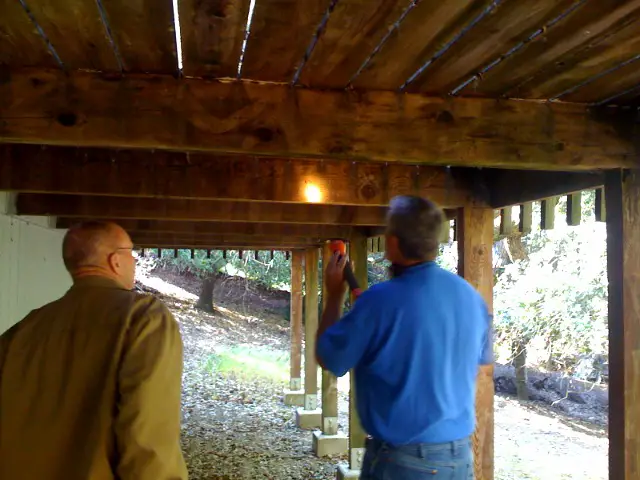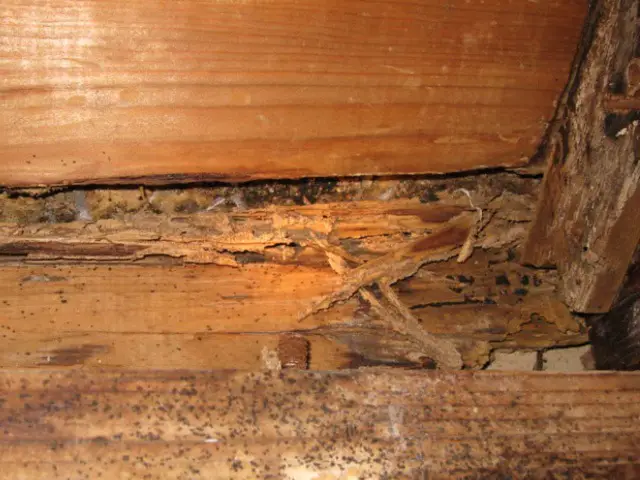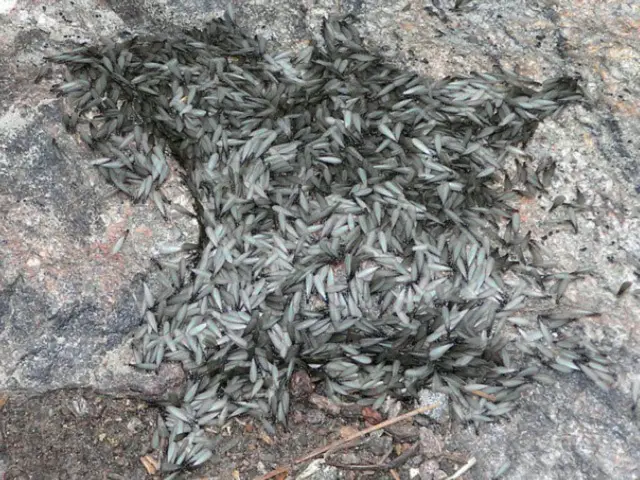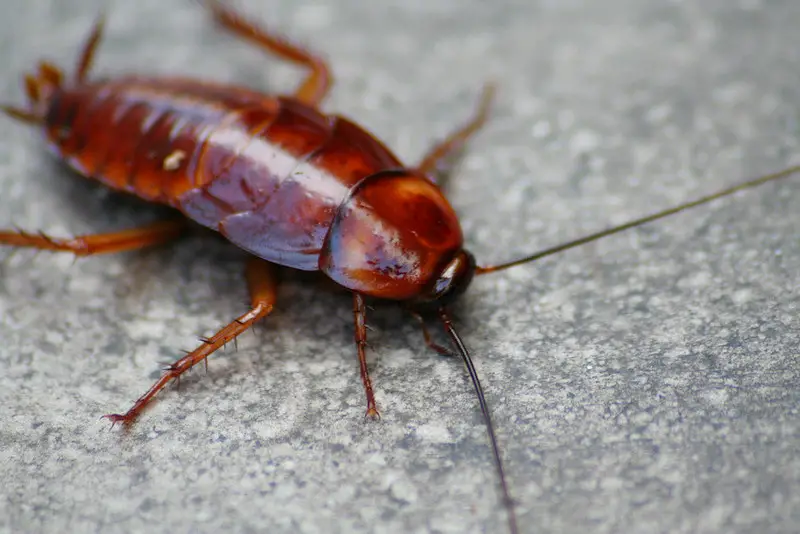Termites in Laminate Flooring
Each year termites damage laminate flooring. If you have laminate flooring, your home could be in danger of termite damage. Follow these tips to spot and prevent termite damage in your laminate floor.
If the termite infestation goes untreated for a while, the laminate floors can weaken and begin to give way. Excessive squeaking is a sign of a termite-damaged laminate floor.
Some people believe that laminate flooring is termite-proof. Unfortunately, termites can and do damage laminate flooring. Termites can also eat the backing off of the laminate.
You’re in the clear if you find that your home is termite-free after a termite inspection. But you still need to worry about termite prevention.
Related posts:
- What Are Common Termites In Miami?
- What Are Common Termites In Jacksonville?
- What Are Common TERMITES IN FLORIDA?
- How To Prevent Termites In Texas?
Here are some tips to prevent termite damage in laminate flooring:
- Keep wood piles away from your house
- Schedule yearly termite inspections
- Seal cracks, crevices, and small openings on the exterior of your house
- Get rid of rotting tree fences or stumps
- Minimize or completely eliminate wood-to-soil contact
No one wants to come across termite damage in their laminate floor. If left untreated, termite damage can render structures unlivable, requiring expensive repairs. When it comes to preventing termite damage, the key is to be proactive so that you’re not required to replace your laminate flooring.
Signs of Termites in Laminate Flooring
If you have laminate flooring in your home, you should know the signs of termites. Each year termites damage more than 600,000 homes in the U.S., and they love to eat through laminate flooring.
Frass, also known as termite droppings, is a common sign of termite activity in homes. As termites eat through the laminate flooring and other wood in your house, they digest it and push it out of the colony to avoid buildup.
Unfortunately, termite droppings are not always visible. Only frass from drywood termites is visible to humans. Drywood termite frass is wood-colored and pellet-shaped, often appearing like wood shavings or dust.
Subterranean termites use their droppings to build mud tunnels. If you live in the northeast, it’s less likely that you’ll encounter any drywood termite droppings.
Mud tubes on your property show termite activity. Mud tubes are similar to narrow veins along the side of your house. These tubes start from the ground and run toward exposed wood areas.
Mud tubes protect termites from dry air. Subterranean termites are some of the most common types of termites in the United States. These termites have thin exoskeletons and will dry out very quickly. Therefore, they need a humid environment to thrive. Mud tubes allow these pests to travel safely from their colony to food sources.
Mud tubes signal an active termite infestation. You can break off a piece of the mud tube and check for live termites. Even if you don’t find any live termites, you should check again in a couple of days to see if the termites repaired the mud tube.
Unfortunately, even if you don’t find any signs of live termites, it doesn’t mean there is no termite infestation. The termites may have moved to another area on your property with better access to their food source.
Can termites damage laminate flooring?
Termites can damage laminate flooring. Many homeowners wrongly believe that termites only damage hardwood flooring. But termites often the sublayers on laminate flooring.
Assessing termite damage in laminate flooring can be tricky. Infestation is often confused with water damage. Often, termites eating through your laminate floor looks like common water damage.
The sagging, blistered sections in laminate flooring can signify termite damage. However, upon closer inspection of laminate flooring areas, you’ll see a series of tunneling, located mostly beneath the buckled tile areas, which are holes created by termites “chewing” through your laminate flooring.
Unfortunately, the laminate flooring is beyond repair when you notice all this damage. Termite damaged laminate flooring needs to be completely replaced. If left untreated, the termite infestation in laminate flooring can affect the entire structure of your house.
Avoid the financial burden and any accompanying stress, and prevent these pests from eating your laminate flooring for dinner.
So, how can you tell if you have termites inside the walls and laminate flooring? Regarding termite inspection, it’s all about reading the telltale signs of termite infestation. Since these wood-eating insects live in wooden structures or deep in the soil, such as the flooring and walls of your house, it is unlikely that you’ll ever have any up-close-and-personal contact with termites.
As homeowners are usually unaware of termites until it’s too late, you’ll want to be watchful for these termite signs:
- Mostly noticeable at bases and wall joints, termites produce a mud-like, earthen-colored packing on the laminate flooring surface.
- As termites hollow out laminate floors during excavation, you’ll hear audible tapping noises once your floors are severely infested.
- Termite droppings or frass is wood-colored. The ridged pellets are tiny. You may find little piles of termite droppings throughout your house near the entry points.
Do termites eat laminate floors?
Termites eat the sublayers on laminate flooring. If you’ve invested money in installing laminate flooring, also known as floating wood tile, in your home, you might ask: “Do termites eat laminate flooring?”
The short answer is: termites eat anything with wood. So, if any wood is in your laminate flooring, termites could damage it.
If termites can get to your laminate flooring, they could damage it.
Have you noticed excessive squeaking? The squeaking sound is often the first sign of damaged laminate flooring. Many homeowners confuse termite damage with water damage.
Termites damage the structural integrity of laminate flooring faster than hardwood flooring. It’s because laminate flooring has only a thin layer of wood. As a result, termites can damage it much faster.
Hollow sounds can also signal water damage or termite infestation. If you find termite tubes outside your house, you are probably dealing with termite damage, not water damage.
So, yes, termites eat laminate flooring. Can you fix the laminate flooring damaged by termites? Unfortunately, you have to replace the flooring. There is no other way to fix the damage.
Unfortunately, laminate flooring is not as durable as hardwood flooring. It’s made of a thin layer of wood with vinyl on top. But before replacing the flooring, you should get rid of the termites.
How to treat termites in laminate floors?
If termites damage laminate flooring, the termites should be treated first. Before the laminate flooring is repaired or replaced, make sure termites are eliminated from your house.
Are laminate floors termite resistant?
Laminate floors are not termite resistant. These wood-eating pests can damage the underlying flooring of laminate floors. To the untrained eye, termite damage could seem like water damage.
How to protect laminate flooring from termites?
The best way to protect laminate flooring from termites is to schedule a yearly termite inspection. Because laminate floors are not termite-resistant, prevention is key.
This is especially true if your house is located in an area where subterranean termites are known to be active.
Although termite damage to laminate flooring may seem uncommon, it often happens.
Is laminate flooring termite-proof?
Laminate flooring is not termite-proof. Termites can still damage your laminate flooring.
Will termites eat vinyl plank flooring?
Termites eat vinyl plank flooring or the underlying wood. You should schedule a yearly termite inspection to minimize termite damage.




